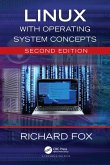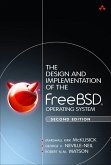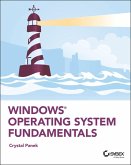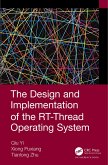Key Features
¿ Learn core concepts across desktop, mobile, embedded, and network operating systems.
¿ Stay updated with modern OS advancements, real-world applications, and best practices.
¿ Meticulously designed and structured for University syllabi for a structured and practical learning experience.
Book Description
Operating systems (OS) are the backbone of modern computing, enabling seamless interaction between hardware and software across desktops, mobile devices, embedded systems, and networks. A solid understanding of OS design is essential for students pursuing careers in software development, system architecture, cybersecurity, and IT infrastructure.
[Kickstart Operating System Design] provides a structured, university-aligned approach to OS design, covering foundational and advanced topics essential for mastering this critical field. Explore core concepts such as process management, system calls, multithreading, CPU scheduling, memory allocation, and file system architecture. Delve into advanced areas like distributed OS, real-time and embedded systems, mobile and network OS, and security mechanisms that protect modern computing environments. Each chapter breaks down complex topics with clear explanations, real-world examples, and practical applications, ensuring an engaging and exam-focused learning experience.
Whether you're preparing for university exams, technical interviews, or industry roles, mastering OS design will give you a competitive edge. Don't miss out-build expertise in one of the most critical domains of computer science today!
What you will learn
¿ Understand OS architecture, process management, threads, and system calls.
¿ Implement CPU scheduling, synchronization techniques, and deadlock prevention.
¿ Manage memory allocation, virtual memory, and file system structures.
¿ Explore distributed, real-time, mobile, and network OS functionalities.
¿ Strengthen OS security with access control and protection mechanisms.
¿ Apply OS concepts to real-world software and system design challenges.
Table of Contents
1. Computer Organization and Hardware Software Interfaces
2. Introduction to Operating Systems
3. Concept of a Process and System Calls
4. Threads
5. Scheduling
6. Process Synchronization and Dead locks
7. A. Computer Memory Part 1
B. Memory Organization Part 2
8. Secondary Storage and Interfacing I/O Devices
9. File System
10. Distributed OS
11. Real-Time Operating Systems and Embedded Operating Systems
12. Multimedia Operating Systems
13. OS for Mobile Devices
14. Operating Systems for Multiprocessing System
15. Network Operating System
16. Protection and Security
Index
Dieser Download kann aus rechtlichen Gründen nur mit Rechnungsadresse in A, B, BG, CY, CZ, D, DK, EW, E, FIN, F, GR, HR, H, IRL, I, LT, L, LR, M, NL, PL, P, R, S, SLO, SK ausgeliefert werden.









